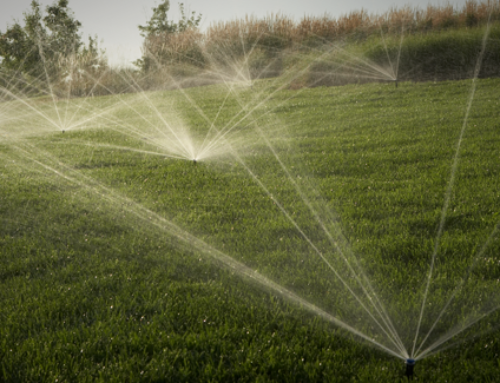We often get asked, “why do I need to get my backflow inspected?” Short answer is: it is the law. The long answer is better explained By Tom Crain’s article in Turfgrass Magazines October 2014 issue.
The Importance of Backflow Prevention
Backflow prevention is something landscapers and irrigation contractors often take for granted, but the installation of this device should be an integral component of any effective irrigation system.
The official law of backflow prevention goes back a long way. It was 1973 when The U.S. Environmental Protection Agency established “The Safe Drinking Water Act” as a means of protecting public water systems from harmful contaminants and pollutants that may enter the water system through cross-connections, backflow and back-siphonage.
There’s even an official organization, The American Backflow Prevention Association, whose 1,000-plus members have a common interest in protecting drinking water from contamination through cross-connections. It offers education, certification and technical assistance through such projects as its “Buster Backflow” comic books, Backflow Tester & Cross Connection Control Specialist exams and a new resource-enriched website (http://www.abpa.org).
In most all states, anyone who connects a lawn sprinkler to a municipal water supply must have a backflow preventer. Come spring, most states require annual testing of backflow preventers with each utility company having slightly different regulations regarding types, locations and testing of backflow preventers.
Why backflow prevention matters
Backflow prevention is top of mind for Clint Allison, president of Rainscapes, Maryville, Tennessee, one of the few east Tennessee certified irrigation contractors. Rainscape’s services include commercial and residential irrigation installation, seasonal irrigation maintenance and landscape lighting and design. “At last count, there were 1,205 backflow preventer devices in my county,” he says. “This means 1,205 opportunities for the local water supply to become contaminated.”
Jeremy Mansell, senior technical trainer at Rain Bird, points out that backflow prevention can also be a life or death situation. “People can be injured or even killed with faulty irrigation systems,” he warns. “It’s not worth risking someone’s life. Old irrigation systems that have been installed before backflow requirements were in place can be a safety concern and should be pointed out to end-users.”
In addition, with terrorism seemingly always a threat, backflow is a major concern. As Chad Touchet, CEO at Houston-based BackFlow Armor, explains, “In less than 30 seconds, a terrorist could commit more murders in one Houston office building than were committed during the 9/11 Twin Towers attack. Most office buildings here in Houston have unprotected backflow devices, which could leave them open to possible bioterrorism attacks.”
Stop Backflow Theft
Because of their copper components, backflow preventers are often the target of thefts, points out Clint Allison, president of Rainscapes, Maryville, Tennessee.
As such, homeowners and businesses should take every precaution to make sure that doesn’t happen. “There are lead-free devices that use plastics for the check assemblies and use a plastic-coated brass for the housing,” says Chris Keating, district sales manager for Toro Irrigation. “The plastic-coated brass reduces backflow theft since it reduces the recycling value by about 90 percent.”
The job of the backflow preventer
So, now that we know the significance of backflow in the world of irrigation, what exactly causes it and how do you efficiently and profitably safeguard against it when working with your client’s landscape irrigation system?
“The job of backflow preventers is to ‘prevent’ contaminated water from getting back into the water supply,” Mansell explains. “If there is a lower water pressure on the supply side of the irrigation system, contaminants can move backwards into the public water supply.”
Common contaminants include the landscaper’s potentially dubious duo of pesticides and fertilizers capable of infiltrating the irrigation system, creating a health hazard if backflow were to occur. What causes this is a drop in pressure in supply, also known as back syphoning, Mansell says. This can be caused by a city mainline break, operating a high-water-demand device like a fire hydrant or increasing pressure on the irrigation system itself.
Back pressure, the increased pressure on the irrigation system itself, results from adding a pump to the irrigation system or by having the irrigation system at a higher elevation than the backflow device/water supply.
A backflow preventer is like a one-way gate for water, explains Irrigation Tutorials, a company that maintains an up-to-date website of free educational tutorials for landscape and irrigation professionals. Backflow preventers can be as simple as a single check valve that closes when water flow reverses. Using a simple check valve as a backflow preventer might be considered the equivalent of a turnstile at a store entrance. It’s not very reliable. Even a small amount of effort will overcome it. A more elaborate backflow preventer can be a complicated device that consists of multiple check valves, water release valves, air vents and/or systems that allow it to be tested to assure it is working properly. This kind of backflow preventer might be the equivalent of an airport exit security checkpoint with one-way gates and an armed guard.
Backflow preventers come in all shapes and sizes
The most effective backflow preventers are also the most expensive single pieces of equipment on a sprinkler system, and must be maintained regularly to function properly, Touchet explains.
There are five basic types of mechanical backflow devices designed to make sure water flows in one direction offering more advanced protection than a simple check valve. Most backflow devices are installed above grade, making the installation quick and easy (only a few hours maximum in most cases).
“Vacuum breakers are less expensive but are not allowed in all areas,” Mansell says. “A vacuum breaker also has more requirements for installation and operation.” Site conditions are important, as well as location of where the backflow preventers are installed. For example, a pressure vacuum breaker must be installed 12 inches higher than the highest outlet on the irrigation system, but no more than 4 feet above grade, according to National Plumbing Code standards.
A reduced pressure assembly will be more expensive than a vacuum breaker, but is easier to install. “Its only requirement is 12 inches of clearance above grade for the atmospheric vent in the bottom of the device,” he says. “It can even be installed in a basement as long as there is a drain and 12 inches of clearance for the vent in the device.”
One of the most important factors about backflow prevention that every operator needs to understand is that local codes dictate the type of device used. “Sometimes you need a licensed plumber to install a backflow preventer,” Mansell says. “Other municipalities may allow any contractor to install a backflow device but then could require a certified backflow inspector to verify the installation.”
As Mansell stresses, it’s particularly important for landscaping and irrigation businesses that operate in a number of different cities, counties and states where regulations may be different to stay abreast of all the rules and regulations of backflow for all the territories where the landscaper operates.
For the last 20 years, Tom Crain, based in Akron, Ohio, has been a regular contributor to B2B publications, including many in the green industry. You can contact him at [email protected].

